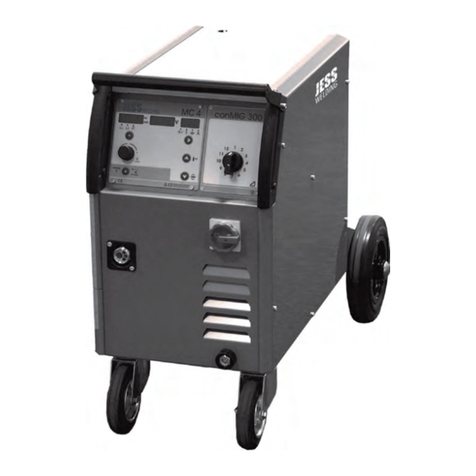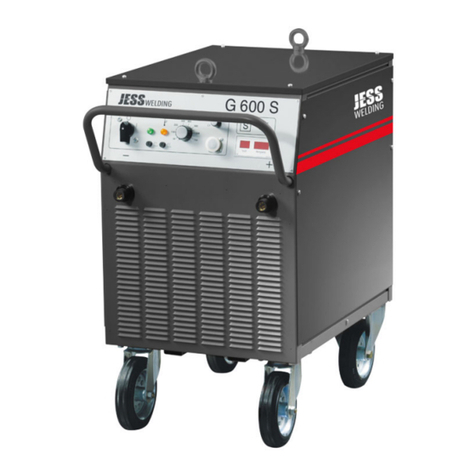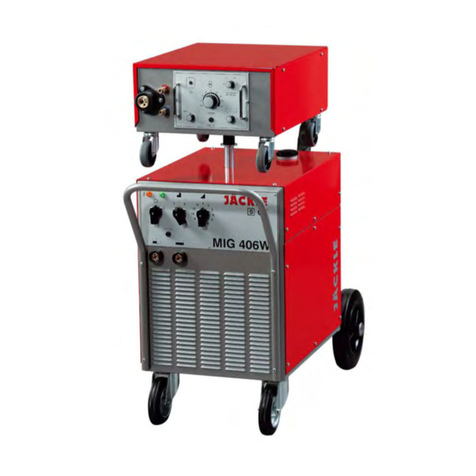
Operating Manual E4-2800/4200/5200 / M4-3000/4000/5500
Smoke and gases
Harmful metallic powder and smoke are released during welding. Ensure sufficient supply of
fresh air and adequate ventilation. Never use oxygen for the ventilation of rooms.
The following metals and alloys or workpieces that are coated with them require a suction
device during welding: beryllium, lead, chrome, graphite, cadmium, mercury or zinc.
To prevent the formation of toxic gases during welding, the workpiece has to be cleaned from
any residues of halogen solvents and degreasing agents.
It is strongly recommended, not to place gas cylinders into narrow places. In case of leaks,
shielding gas may escape to such an extent that the oxygen content of the inhaled air
decreases to dangerously low values.
Flammable gases or gases which induce a chemical reaction, such as Acetylene, Propane,
pure Hydrogen, pure Oxygen are prohibited!
Fire prevention
Any kind of fire hazards must be avoided. Flames can form from flying sparks, spatters,
glowing parts or hot slag.
Never weld on containers with flammable or toxic contents. Remove any kind of flammable
material from the welding area. Do not weld in areas where flammable vapours or gases can
develop.
Ensure that fire extinguishing equipment – appropriate to the welding process – is available
close to the welding area and that easy access is possible.
Explosion
Never weld on or in the vicinity of containers which are under pressure, and do not weld in
rooms with a high concentration of explosive powders, gases or vapours.
High-pressure gas cylinders have to be handled with utmost care:
• The gas cylinder must not be connected directly to the gas hose of the welding power
source. A pressure regulator has to be interposed
• Protect gas cylinder, valves, pressure regulator and gas hose from heating, damage
and violence.
Electrical danger
The terminal voltage of the welding machine may be up to 113V= or 48 V~ !
• If you have to stand on metal or in a wet area during welding, insulation with
suitable dry material is required.
• Avoid contact with wet or conductive metal parts; wear dry clothing. Keep
everything dry, including clothing, welding area, cables and welding machine.
• Although the machine is marked „S“ (approved for welding in environments with
increased electrical hazard), the power source itself may not be installed here,
because of the mains voltage 230 V or 400 V. Only the welding torch and the wire
drive unit are permitted at such places.
• Always maintain correct insulation of cables, plugs and welding torches. Before any
work is carried out inside the power source, the mains switch must be switched off
and the mains plug has to be disconnected.


































